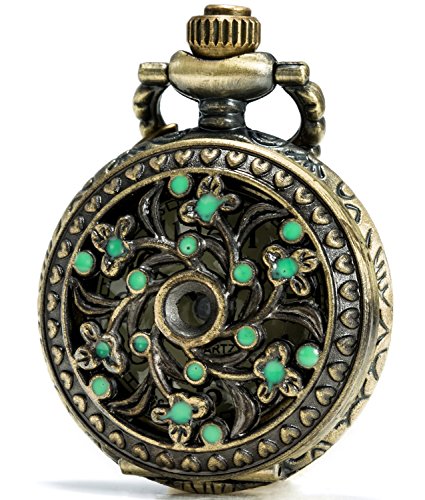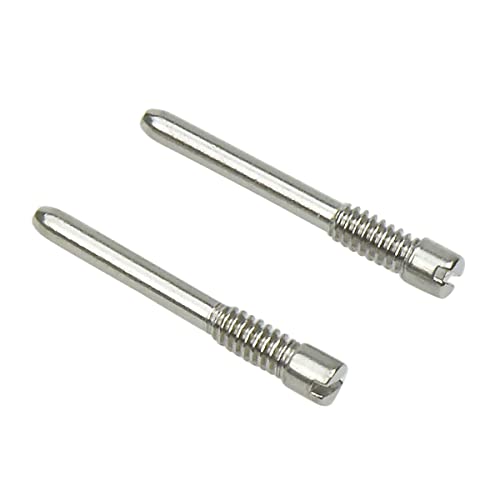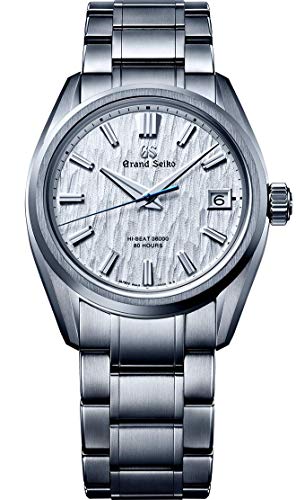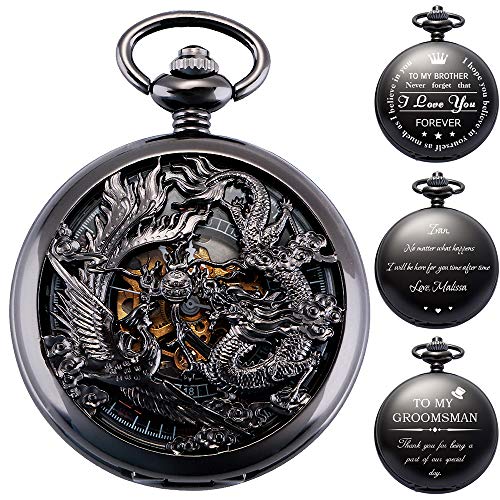As watch enthusiasts, we can all appreciate the timeless beauty and craftsmanship that goes into creating a truly remarkable timepiece. From intricate designs to innovative technologies, the world of watchmaking is a treasure trove of artistry. In this blog post, we delve into the captivating world of enamel dial artistry and compare it to other decorative techniques commonly used in watchmaking. Join us on this journey as we explore the delicate brush strokes, vibrant colors, and painstaking attention to detail that make enamel dials a truly extraordinary work of art. By the end of this article, you will gain a deeper appreciation for the skill and dedication required to create these exquisite timepieces and perhaps find yourself drawn to the allure of enamel dial artistry. So, sit back, relax, and let’s embark on this exploration of the captivating world of watchmaking art.
Exquisite Timepieces with Enchanting Enamel Dial Artistry
Enamel Dial Artistry
Enamel dials have long been synonymous with luxury timepieces, adding a touch of elegance and sophistication to any watch. The process of creating enamel dials is a true testament to the artistry and skill of watchmakers, involving meticulous attention to detail and a deep understanding of the materials used. In this blog section, we will take a closer look at the intricate process of creating enamel dials, highlighting the craftsmanship and expertise involved.
The Enamel Dial Creation Process
1. Preparation
Before the actual enameling process begins, a watchmaker must carefully prepare the dial. This involves cleaning it thoroughly to remove any impurities or dirt that may affect the final result. The dial is then polished to achieve a smooth and flawless surface, ready to be coated in enamel.
2. Selection of Enamel
Choosing the right type of enamel is crucial to achieving the desired aesthetic and longevity of the dial. There are various types of enamel available, each with its own unique characteristics and qualities. Some common types include:
- Grand Feu Enamel: Known for its exceptional durability and vibrant colors, this type of enamel requires multiple high-temperature firings to achieve its exquisite finish.
- Champlevé Enamel: This technique involves creating recessed areas on the dial, which are then filled with enamel. The result is a beautiful, multi-dimensional design.
- Cloisonné Enamel: A technique that involves using thin metal wires to create intricate patterns on the dial, which are then filled with enamel. This technique allows for intricate designs and incredible detail.
The choice of enamel will depend on the desired effect, design, and durability required for the watch.
3. Applying Enamel
The application of enamel is an intricate and delicate process that requires precision and patience. The enamel is carefully applied to the dial surface, either with a brush or by carefully pouring it onto the dial. This process must be conducted in a controlled environment to ensure a smooth and even distribution of the enamel.
4. Firing and Finishing Touches
Once the enamel has been applied, the dial undergoes a series of firings at high temperatures. These firings are crucial to achieve the desired effect and ensure the enamel is permanently fused to the dial’s surface. Each firing can take anywhere from a few minutes to several hours, depending on the type of enamel used.
After the final firing, the dial is meticulously inspected for any imperfections. If necessary, additional layers of enamel may be applied to achieve the desired depth and color. Once the dial has passed the rigorous quality control measures, it is ready for the final finishing touches, such as attaching the hands, markers, and any additional decorations.
The Beauty of Enamel Dials
Enamel dials offer a multitude of benefits, making them a highly sought-after feature in luxury watches. Here are some key points to consider:
- Unparalleled Aesthetics: Enamel dials exude a timeless elegance and offer a level of depth and richness that cannot be replicated by other materials. The colors, textures, and patterns achieved through enamel work add a touch of luxury and beauty to any watch.
- Durability and Longevity: When properly crafted, enamel dials are incredibly durable and resistant to fading or discoloration over time. The high firing temperatures ensure that the enamel is permanently fused to the dial, ensuring its long-lasting beauty.
- Unique Artistry: The art of enamel dial making is a centuries-old tradition that showcases the skill and expertise of the artisans involved. Each enamel dial is truly one-of-a-kind, with the potential for intricate designs and stunning details that reflect the craftsmanship of the watchmaker.
In Conclusion
The creation of enamel dials is a meticulous and time-consuming process that requires an exceptional level of craftsmanship and attention to detail. The result is a truly remarkable piece of artistry that enhances the beauty and value of any luxury watch. So, the next time you admire an enamel dial, take a moment to appreciate the skill and dedication that went into creating this timeless masterpiece.
Other Decorative Techniques
When it comes to watch dials, enamel is often the first decorative technique that comes to mind. However, there are several other techniques that can enhance the visual appeal and durability of watch dials. In this section, we will explore three alternative decorative techniques: guilloché, engine turning, and gem-setting. We will compare their unique characteristics to those of enamel, providing you with a comprehensive understanding of the options available to you.
Guilloché: Exquisite Detail
Guilloché is a decorative technique that involves intricate engraving patterns on watch dials. These patterns are created using a specialized machine, the guilloché lathe, which meticulously cuts lines or shapes onto the surface of the dial. The resulting designs can range from symmetrically swirling patterns to intricate geometric motifs.
Key Points:
- Guilloché creates captivating and intricate designs on watch dials.
- The technique utilizes a guilloché lathe machine to engrave precise patterns.
- The designs can vary from swirling patterns to geometric motifs.
Engine Turning: Precision Craftsmanship
Engine turning, also known as damaskeening, is a decorative technique that resembles guilloché but involves a different approach. Instead of using a guilloché lathe, engine turning is typically executed by hand-operated machines or even by skilled artisans. This technique creates mesmerizing patterns through the careful rotation and engraving of the watch dial’s surface.
Key Points:
- Engine turning produces stunning patterns on watch dials.
- The technique involves hand-operated machines or skilled artisans.
- It achieves captivating patterns by rotating and engraving the dial’s surface.
Gem-Setting: Unmatched Brilliance
For those seeking exceptional luxury and opulence, gem-setting is a decorative technique that can add a touch of splendor to any watch dial. By carefully placing meticulously cut gemstones onto the dial’s surface, watchmakers create a dazzling display of brilliance and glamour. Gem-setting can range from minimal accents to intricate designs, depending on personal preferences.
Key Points:
- Gem-setting adds a luxurious touch to watch dials.
- Meticulously cut gemstones are placed onto the dial’s surface.
- It can create anything from minimal accents to intricate designs.
Enamel vs. Alternative Techniques: Comparing Visual Appeal and Durability
Now that we have explored these alternative decorative techniques, let us compare their visual appeal and durability to enamel:
| Technique | Visual Appeal | Durability |
|---|---|---|
| Guilloché | Exquisite detail | Excellent |
| Engine Turning | Precision craftsmanship | Very good |
| Gem-Setting | Unmatched brilliance | Depends on materials used |
| Enamel | Timeless elegance | Very good |
Key Points:
- Guilloché offers exquisite detail and excellent durability.
- Engine turning provides precision craftsmanship and very good durability.
- Gem-setting delivers unmatched brilliance, but durability depends on the materials used.
- Enamel offers timeless elegance and very good durability.
In conclusion, while enamel is undoubtedly a remarkable decorative technique, there are other options to consider when designing a watch dial. Guilloché, engine turning, and gem-setting each bring their own unique qualities and visual appeal to the table. Whether you prefer the meticulous depth of guilloché, the precision craftsmanship of engine turning, or the brilliance of gem-setting, these alternative techniques offer a variety of possibilities to enhance the beauty and durability of watch dials.
Advantages of Enamel Dials
When it comes to watches, there are numerous materials that can be used for dials. One material that has stood the test of time and continues to captivate watch enthusiasts is enamel. Enamel dials offer a unique set of advantages that contribute to their timeless beauty and durability. In this blog section, we explore the benefits of enamel dials, including their color vibrancy, resistance to fading and ageing, and overall appeal.
Timeless Beauty
Enamel dials are renowned for their classic and elegant appearance, evoking a sense of tradition and sophistication. The smooth, glossy surface of an enamel dial creates a captivating visual effect, reflecting light in a way that no other material can replicate. These dials have an inherent depth and richness, showcasing the intricate details of the design with a mesmerizing glow. The simplistic yet refined aesthetic of enamel dials ensures they remain eternally stylish, transcending trends and fads.
Color Vibrancy
Enamel dials offer a wide palette of vibrant colors that are unmatched by other dial materials. Their vivid hues are achieved through a meticulous process wherein enamel is applied in layers and fired in a kiln at extremely high temperatures. This firing process allows the enamel to fuse with the metal base, resulting in a unified and permanent marriage between the two materials.
The color intensity of enamel dials is unrivaled, providing a striking contrast to the surrounding elements of the watch. Whether it’s a deep blue, a bright white, or a rich black, the colors on an enamel dial are captivating and alluring, capable of transforming a timepiece into an eye-catching work of art.
Resistance to Fading and Ageing
One of the most significant advantages of enamel dials is their exceptional resistance to fading and ageing. Unlike other materials that can lose their luster over time, enamel dials retain their original beauty for generations. This is due to the fusion of enamel and metal during the firing process, providing a level of durability that ensures the colors won’t fade or degrade with age.
Furthermore, enamel dials are highly resistant to scratches, allowing them to maintain their flawless appearance even after years of wear. This durability makes enamel dials an excellent investment, as they can be passed down as heirlooms and retain their value and allure.
Overall Appeal
Enamel dials possess a timeless and enduring quality that transcends the boundaries of fashion and trends. They have an allure that appeals to both watch collectors and enthusiasts, as well as those who simply appreciate fine craftsmanship and artistry. The combination of their timeless beauty, vibrant colors, and resistance to fading and ageing makes enamel dials a truly remarkable choice for any watch connoisseur.
In summary, here are the key advantages of enamel dials:
- Timeless beauty with a classic and elegant appearance.
- Vibrant colors achieved through a meticulous firing process.
- Exceptional resistance to fading, aging, and scratches.
- Enduring appeal that transcends fashion trends.
Enamel dials are not only aesthetically pleasing, but they also hold a significant place in the world of horology. Their unique qualities and undeniable charm make them a cherished choice for watch enthusiasts, ensuring that their beauty will last for generations to come.
Considerations and Trade-offs
When it comes to choosing between enamel dial artistry and other decorative techniques, there are several factors to consider. In this section, we will delve into the key considerations, including cost, complexity, and maintenance requirements, to help you make an informed decision.
Cost
One of the primary considerations when comparing different decorative techniques is the cost involved. Here’s a breakdown of how enamel dial artistry stacks up against other methods:
- Enamel Dial Artistry
- Requires highly skilled artisans to apply layers of enamel by hand, resulting in a time-consuming and intricate process.
- The intricate craftsmanship involved contributes to higher production costs.
- However, enamel dials can be incredibly durable, which can offset potential maintenance or repair costs in the long run.
- Other Decorative Techniques
- Techniques such as guilloché engraving or pad printing are generally less labor-intensive than enamel artistry.
- These techniques often involve the use of machinery, resulting in lower production costs.
- However, the lifespan of these dials may be shorter due to the potential for wear and tear over time.
When considering cost, it is important to weigh the upfront investment against long-term durability and potential maintenance expenses.
Complexity
The complexity of the decorative technique itself is another crucial factor to consider. Here’s a comparison between enamel dial artistry and other decorative techniques in terms of complexity:
- Enamel Dial Artistry
- The process of creating an enamel dial involves multiple layers of enamel being applied and fired at high temperatures, resulting in a rich and vibrant final product.
- Achieving consistent quality requires a high level of skill and precision from the artisans involved.
- The intricate and time-consuming nature of enamel artistry contributes to its exclusivity and uniqueness.
- Other Decorative Techniques
- Techniques like guilloché engraving or pad printing are generally less complex than enamel artistry.
- These techniques involve the use of machinery and specialized tools to create intricate patterns or designs on the dial’s surface.
- While they may offer precision and detail, they don’t match the depth and richness of enamel dials.
The choice between complexity levels comes down to personal preference and the desired aesthetic for your timepiece.
Maintenance Requirements
Maintenance is an essential consideration when choosing a decorative technique, as it affects the longevity and durability of the watch dial. Here’s an overview of maintenance requirements for enamel dials and other decorative techniques:
- Enamel Dial Artistry
- Enamel dials are known for their durability and resistance to fading or discoloration.
- They are less prone to scratches and wear compared to other decorative techniques.
- However, enamel dials may require occasional cleaning to maintain their shine and luster.
- Other Decorative Techniques
- Techniques like guilloché engraving or pad printing can be susceptible to scratching or fading over time.
- Regular maintenance may be necessary to retain the original appearance and quality of these dials.
Considering the maintenance requirements, enamel dials offer long-lasting beauty and durability, making them an excellent choice for watch enthusiasts who value longevity.
Comparing Enamel Dial Artistry to Alternative Watch Decorative Techniques
In this blog post, we have explored the artistry of enamel dial decoration and compared it with other decorative techniques used on watches. We have discussed the intricate and meticulous craftsmanship involved in creating enamel dials, highlighting their durability, vibrant colors, and timeless appeal. Additionally, we have touched upon alternative methods such as guilloche and engraving, emphasizing their unique styles and textures.
Based on personal preferences and priorities, we recommend that watch enthusiasts consider enamel dial artistry if they value exceptional beauty, long-lasting quality, and exquisite details. However, those who appreciate distinct textures or custom designs may find guilloche or engraving techniques more suitable. Ultimately, the choice between enamel dial artistry and other decorative techniques boils down to individual taste and what one values most in their timepiece.















